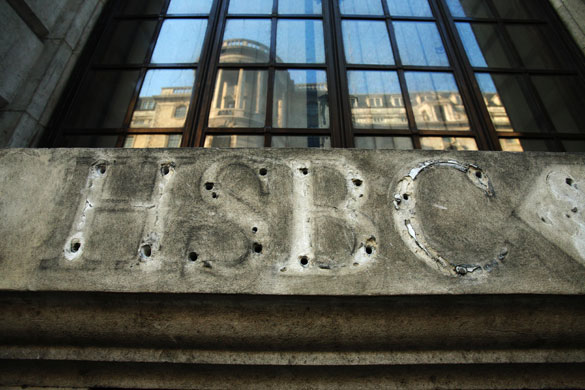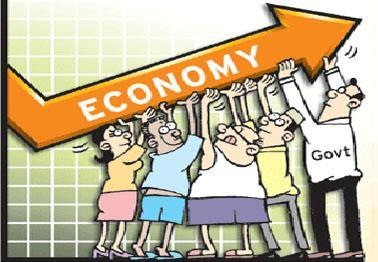As everyone knows, the commercial real estate capital markets have been in turmoil since June of 2007, when the single family sub-prime lending debacle first appeared on the scene.
 Since that time, the lending market has slowly but - ever so consistently - continued to deteriorate. There are fewer lenders lending today than at any other time during this credit crisis and those who are lending are using more conservative criteria for underwriting their loans and qualifying their borrowers.
Since that time, the lending market has slowly but - ever so consistently - continued to deteriorate. There are fewer lenders lending today than at any other time during this credit crisis and those who are lending are using more conservative criteria for underwriting their loans and qualifying their borrowers.
One question I am frequently asked as a commercial mortgage broker is, “What will it take to get lenders to start lending again?” There is no silver bullet – no one solution that will resolve this lending crisis.
In order to get commercial real estate lending back to some semblance of normality several things need to happen, listed below are seven:
- The overall economy needs to improve. Sorry to state the obvious but it needs to be said. The good news is that the economy, fueled by government stimulus, grew last quarter for the first time in more than a year.
Over the last 3 months, GDP grew 3.5%. But the problem is that the recovery so far has been a jobless recovery. In fact, employment growth is still contracting just at a slower rate of loss than previous months.
In order for commercial real estate to benefit from this recovery employment must begin to grow and consumers need to have the confidence to increase spending.
 Commercial real estate fundamentals need to stabilize. Employment growth and improvement in consumer spending will result in an increase in demand for office, retail and industrial space.
Commercial real estate fundamentals need to stabilize. Employment growth and improvement in consumer spending will result in an increase in demand for office, retail and industrial space.
Occupancy rates will stabilize causing rents to firm up and with increased net rental income, default rates on loans will slowly lessen.
- Foreclosures need to occur so banks can cleanse their balance sheets of non-performing assets. One of the important lessons that we learned from the S & L crisis of 20 years ago is to address the problem head on.
Yes, it was painful but bad real estate deals that were taken over by the Resolution Trust Corporation became exciting opportunities for those risk takers that purchased these assets at substantially discounted values.
 Weaker banks need to fail. There are about 8,000 banks in the United States. During the past year about 120 banks have failed with another 400 to 500 banks expected to follow.
Weaker banks need to fail. There are about 8,000 banks in the United States. During the past year about 120 banks have failed with another 400 to 500 banks expected to follow.
If we want to avoid a 10 year recession similar to what Japan experienced during the 1990s we must allow the weaker banks to fail.
We don’t want to follow the example of the Japanese bank regulators who allowed insolvent banks to survive which only prolonged their country’s painful recession.
- Lenders need to extend, amend and pretend. Performing loans, with borrowers who have never been late on a payment, need to be extended when their loans are due regardless of how the loans underwrite in today’s lending environment. Those loans that are marginally performing but are basically sound real estate may need their loan terms amended.
Maybe a lower interest rate, a longer amortization, or a reduction in the loan principal should be implemented, whatever it takes so that the bank doesn’t have to foreclose.
Not foreclosing would be in both the lender’s and borrower’s best interest. Lender’s need to have the wisdom to “kick the can down the road” in hopes that as the economy and real estate fundamentals improve that the future lending environment will also improve making it easier to finance real estate in the future than in today’s lending climate.
 Inflation needs to happen. Experts are predicting, and I fully agree, that inflation is inevitable. It’s not a matter of if it will happen, it is only a matter of when and how much.
Inflation needs to happen. Experts are predicting, and I fully agree, that inflation is inevitable. It’s not a matter of if it will happen, it is only a matter of when and how much.
Those who lock in long term fixed rate loans are going to look incredibly intelligent in a couple of years as interest rates begin to climb along with the cost of a loaf of bread and every other consumer product.
That being said, inflation is the friend of the owner of commercial real estate. As values are slowly pushed up due to inflation the trauma of the present situation will slowly subside.
- A new version of the CMBS product needs to be created. Without the CMBS market there is an estimated $400 to $500 billion shortfall in the supply of capital to finance all the real estate loans coming due over the next three years. There is no lending source – not banks, or life companies or GSEs – on the horizon to absorb this huge loan volume.
What needs to take place is a new and improved version of the CMBS product. Experts suggest four regulatory changes in order to re-establish confidence in this once thriving market:
- Reform of the rating agencies which were complicit in the downfall of CMBS.
- Those who securitize mortgage pools should be required to retain a significant portion of the riskiest tranche (a slice of a mortgage pool with similar inherent risk).
- A portion of the profits should be deferred on the securitizations until the loan portfolio is well seasoned.
To make these regulatory changes will require someone in Washington, DC – Congress, the Federal Reserve, the Treasury Department – to take real leadership on a complicated issue, which so far has been sadly lacking.
 All of these solutions will take time to favorably impact the market. Even if all seven factors were to begin moving in the right direction today, it would take months before the lending environment would fully feel this positive influence.
All of these solutions will take time to favorably impact the market. Even if all seven factors were to begin moving in the right direction today, it would take months before the lending environment would fully feel this positive influence.
Unfortunately my crystal ball tells me that 2010 is going to be another ugly year in commercial real estate as the fundamentals to turn this market around are not yet in place.
Hang in there. It’s not over yet.


